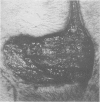Abstract
The acute replacement of full-thickness abdominal wall has been facilitated by polypropylene mesh (Marlex) (PPM), allowing debridement of nonviable tissue and restoration of abdominal wall integrity without tension. However, no substantial long-term follow-up has been reported on the definitive wound coverage after the use of PPM in open wounds. Since 1976, we have placed PPM in 31 patients; 25 for infectious complication, three for massive bowel distension preventing abdominal closure, and three for shotgun wounds with extensive tissue loss. In 29 of 31 patients, the mesh was placed in heavily contaminated wounds; extensive fasciitis was present in 23 patients and 21 had intra-abdominal abscesses. Following mesh placement, 23 reoperations were required for continuing complications. No patients eviscerated, despite these multiple procedures. Polypropylene mesh was highly effective in restoring abdominal wall continuity. Despite advantages when PPM was used, significant long-term problems developed. Seven patients died from their primary illness in the postoperative period. Nine wounds were closed by granulation and subsequent split-thickness skin grafts. All nine developed mesh extrusion and/or enteric fistulae. Nine wounds healed by secondary intention, six developed enteric fistulae or continuing mesh extrusion. Full-thickness flap coverage after granulation provided the best means of wound closure. Polypropylene mesh had significant early advantages for providing abdominal wall integrity even in the presence of severe infection. However, long-term problems were common when wounds were closed to skin grafts or secondary intention. If the mesh cannot be completely removed, strong consideration should be given to myocutaneous flaps for coverage after the primary illness has resolved.
Full text
PDF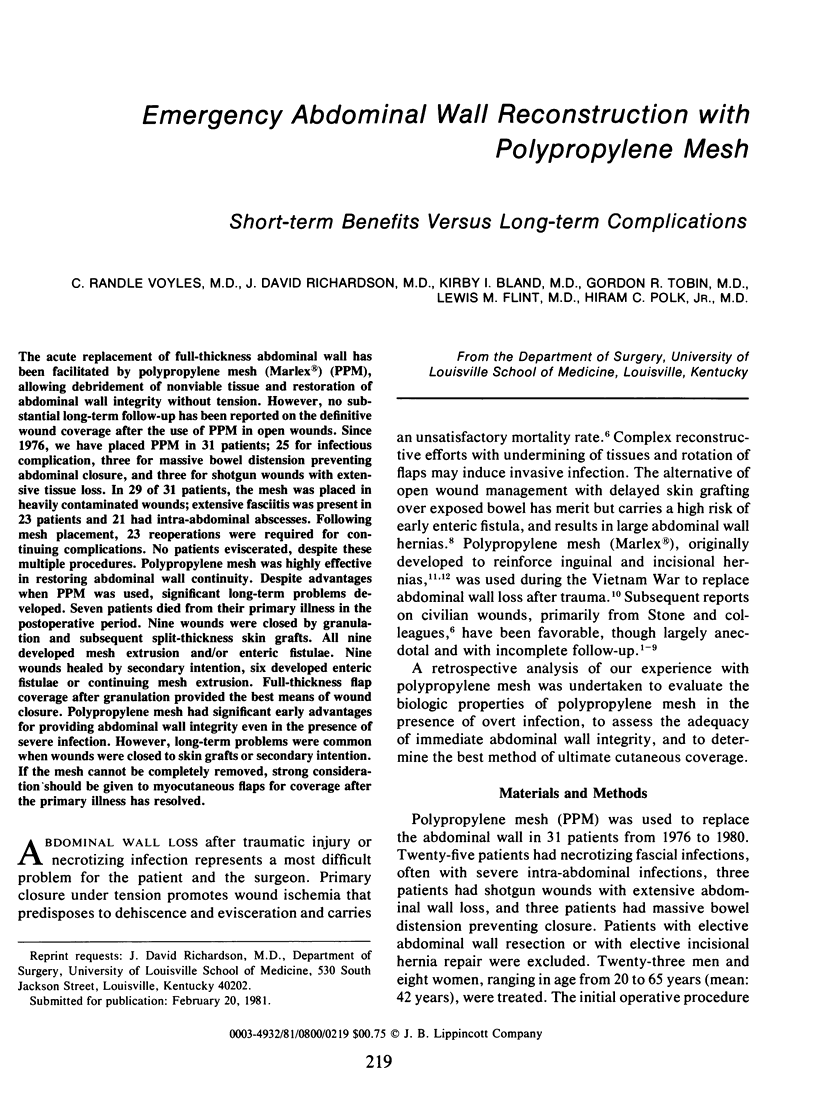
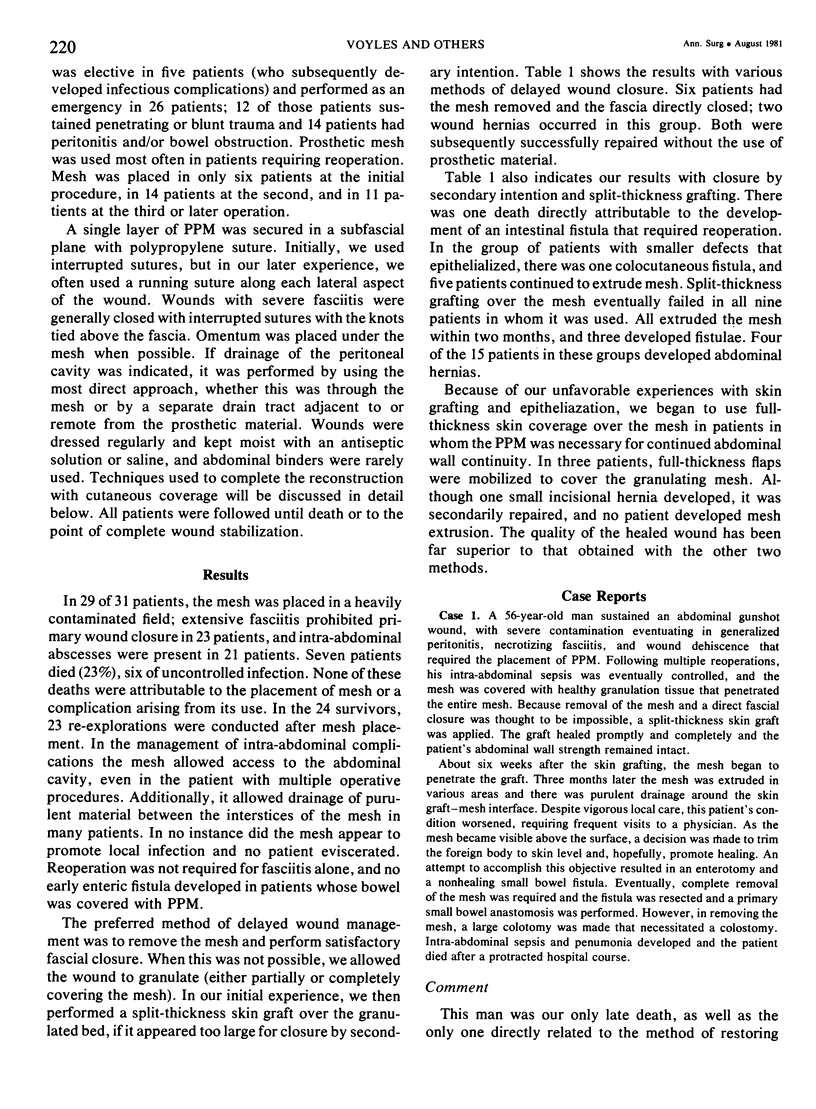
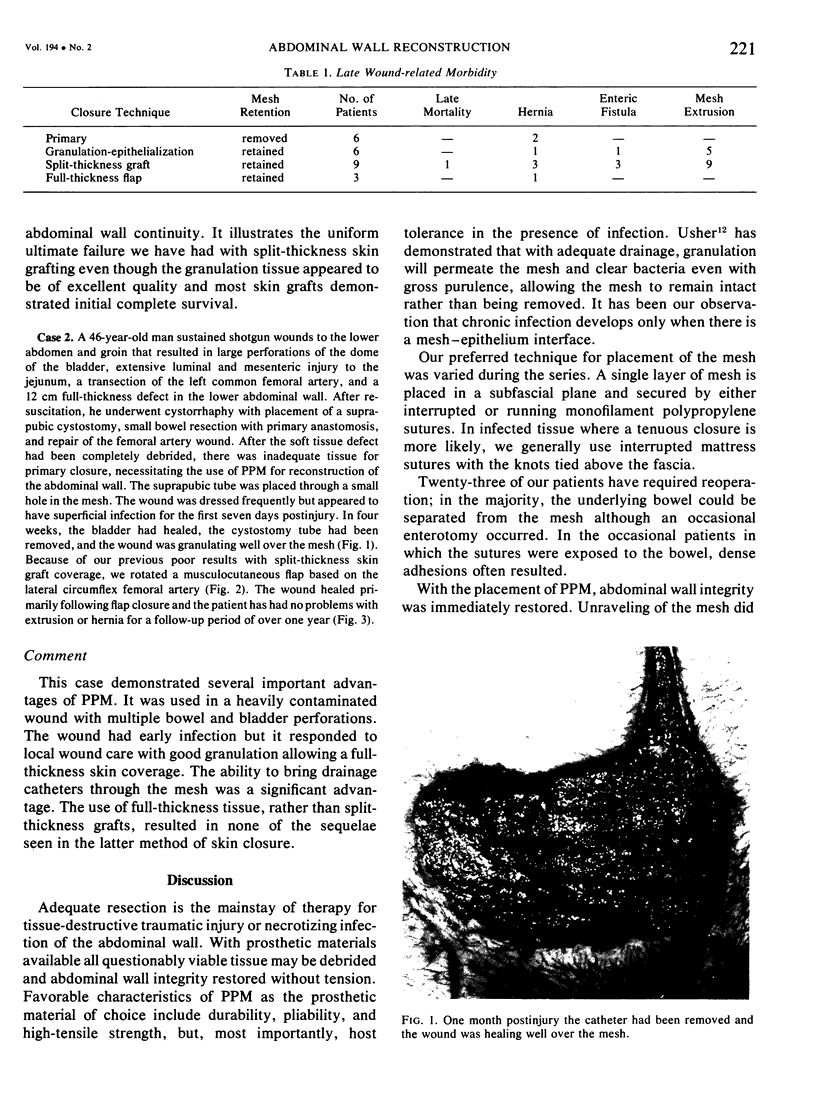
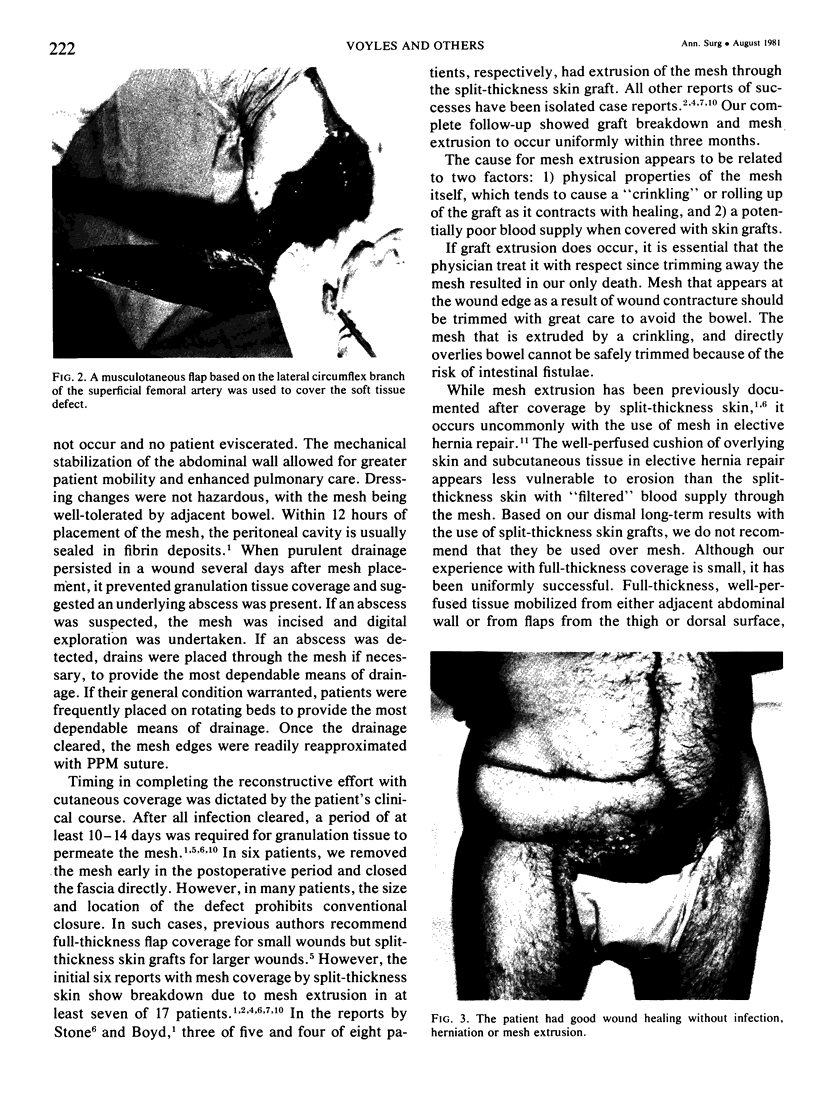
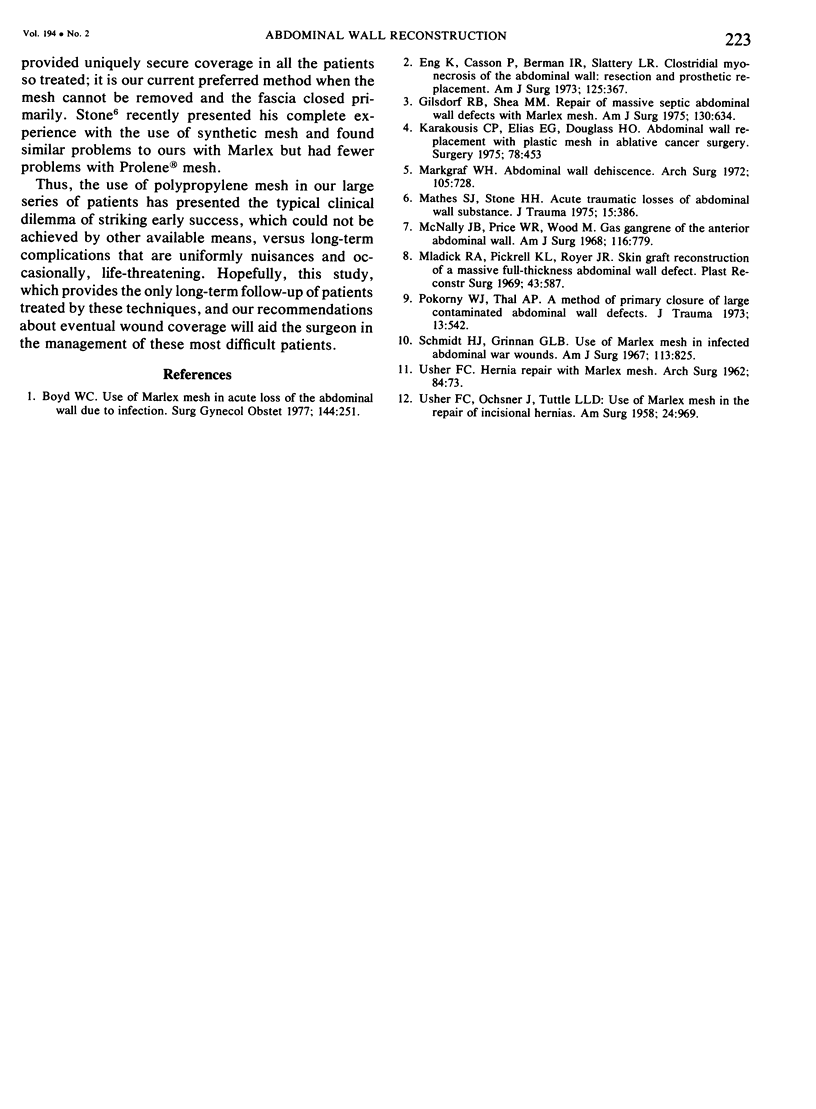
Images in this article
Selected References
These references are in PubMed. This may not be the complete list of references from this article.
- Boyd W. C. Use of Marlex mesh in acute loss of the abdominal wall due to infection. Surg Gynecol Obstet. 1977 Feb;144(2):251–252. [PubMed] [Google Scholar]
- Eng K., Casson P., Berman I. R., Slattery L. R. Clostridial myonecrosis of the abdominal wall. Resection and prosthetic replacement. Am J Surg. 1973 Mar;125(3):367–371. doi: 10.1016/0002-9610(73)90064-0. [DOI] [PubMed] [Google Scholar]
- Gilsdorf R. B., Shea M. M. Repair of massive septic abdominal wall defects with Marlex mesh. Am J Surg. 1975 Dec;130(6):634–638. doi: 10.1016/0002-9610(75)90411-0. [DOI] [PubMed] [Google Scholar]
- Karakousis C. P., Elias E. G., Douglass H. O., Jr Abdominal wall replacement with plastic mesh in ablative cancer surgery. Surgery. 1975 Oct;78(4):453–459. [PubMed] [Google Scholar]
- MASSELL T. B., HERINGMAN E. C., GREENSTONE S. M. Woven Dacron and woven Teflon prostheses. Use for small artery replacement. Arch Surg. 1962 Jan;84:73–79. doi: 10.1001/archsurg.1962.01300190077010. [DOI] [PubMed] [Google Scholar]
- Markgraf W. H. Abdominal wound dehiscence. A technique for repair with Marlex mesh. Arch Surg. 1972 Nov;105(5):728–732. doi: 10.1001/archsurg.1972.04180110051013. [DOI] [PubMed] [Google Scholar]
- Mathes S. J., Stone H. H. Acute traumatic losses of abdominal wall substance. J Trauma. 1975 May;15(5):386–391. doi: 10.1097/00005373-197505000-00003. [DOI] [PubMed] [Google Scholar]
- McNally J. B., Price W. R., Wood M. Gas gangrene of the anterior abdominal wall. Am J Surg. 1968 Nov;116(5):779–783. doi: 10.1016/0002-9610(68)90368-1. [DOI] [PubMed] [Google Scholar]
- Mladick R. A., Pickrell K. L., Royer J. R., McCraw J., Brown I. Skin graft reconstruction of a massive full-thickness abdominal wall defect. Plast Reconstr Surg. 1969 Jun;43(6):587–590. doi: 10.1097/00006534-196906000-00004. [DOI] [PubMed] [Google Scholar]
- Pokorny W. J., Thal A. P. A method for primary closure of large contaminated abdominal wall defects. J Trauma. 1973 Jun;13(6):542–547. doi: 10.1097/00005373-197306000-00008. [DOI] [PubMed] [Google Scholar]
- Schmitt H. J., Jr, Grinnan G. L. Use of Marlex mesh in infected abdominal war wound. Am J Surg. 1967 Jun;113(6):825–828. doi: 10.1016/0002-9610(67)90355-8. [DOI] [PubMed] [Google Scholar]
- USHER F. C., OCHSNER J., TUTTLE L. L., Jr Use of marlex mesh in the repair of incisional hernias. Am Surg. 1958 Dec;24(12):969–974. [PubMed] [Google Scholar]



